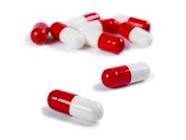A study on viral reservoirs in rhesus macaque monkeys infected with the primate virus SIV-that is similar to HIV- looked at the efficacy of antiretroviral therapy (ART) when started prior to peak viral replication, around the time of peak viral replication, or during early chronic infection. We know that during the very earliest stages of infection, HIV replicates in cellular reservoirs including long-lived memory T-cells as well as anatomical reservoirs such as the brain and intestines. Therefore, as part of the research towards a cure for HIV, researchers have to understand whether antiretroviral therapy started very soon after infection can limit this process.To this end some studies have suggested that reservoirs established early on in infection, before viral replication peaks, may be quantitatively and qualitatively different from reservoirs established later in chronic infection and may be more amenable to cure. Previous research in monkeys indicated that the size of the SIV reservoir in peripheral blood mononuclear cells (PBMCs) and tissues increases significantly between day 7 and day 10 after infection. This study therefore looked at monkeys that were started on multidrug therapy at day 7, day 10, or day 42 after being intravenously exposed to SIV. ART consisted of tenofovir and emtricitabine, the integrase inhibitor dolutegravir, and ritonavir-boosted darunavir. SIV viral load was then measured in blood plasma, bone marrow, small intestine mucosa and lymph nodes. Results showed that ART initiated prior to peak virus replication, limits systemic virus dissemination and seeding of the reservoir in peripheral and extra-lymphoid mucosal compartments. The results also showed that a delay, even as short as three days, can result in a much greater tissue-based reservoir size, capable of inducing rapid viraemia. Concluding that waiting 7 days is too long to delay treatment. Instead aggressive monitoring for acute infection should take place within 36 hours, to ensure the immediate introduction of ART as it is known to profoundly influence treatment outcomes and enhance viral eradication strategies.












